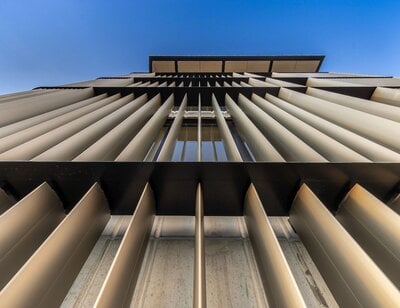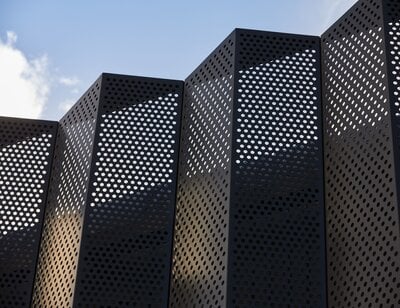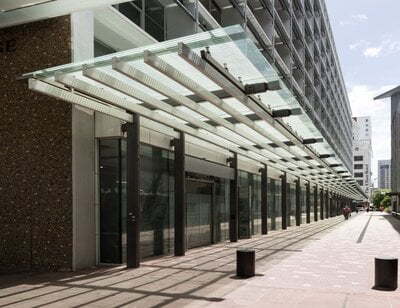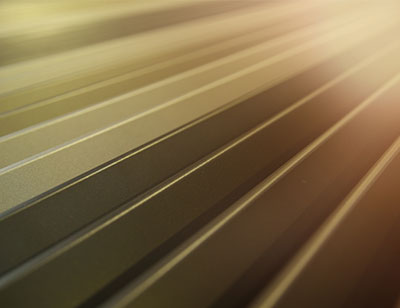The building sector in the EU accounts for around 40% of the total primary energy use, along with 25% of greenhouse gas emissions. It’s a similar story elsewhere and it’s one of the reasons for the push for new buildings to be energy neutral. Yet the issue is not without complexity, with the need to balance energy use against occupant comfort, productivity and learning outcomes (in the case of educational settings).
Transparent elements of the building envelope can provide the desired source of natural daylight but will also increase the heating and cooling requirements of the building. When considering what can be done to strike the balance between energy consumption and occupant comfort, the Solar Heat Gain Coefficient will often enter the discussion.
What is the Solar Heat Gain Coefficient?
The Solar Heat Gain Coefficient (SHGC) is a standard used to measure the solar radiation that passes through glass relative to the amount of solar radiation hitting the glass. For any fenestration product (i.e. the transparent or translucent material used in the facade of a building), solar radiation from sunlight is the primary method of energy transfer.
SHGC is expressed as a number between 0 and 1. The lower the number, the greater the shading properties of the fenestration product. Arriving at the SHGC number itself is not necessarily straightforward because you need to know the shading coefficient (SC), which then needs to be multiplied by 0.87.
SHGC = SC x 0.87
What is the shading coefficient though? It’s an outdated metric used by the window industry to determine the thermal performance of glass, benchmarked to a single layer of glass and describing the fraction of transmitted solar radiation as compared to the benchmark glass, which is given a value of 1.0
This might all sound like hot air and get it wrong and that’s exactly what you’ll end up with. Yet it’s actually incredibly important.
Why is the Solar Heat Gain Coefficient Important?
The SHGC provides a reliable indication of the possible energy burden for a building. Where the SHGC is low there is going to be less demand placed on mechanical cooling during the summer months, when solar gain drives up the indoor temperature. But this is not to say a low SHGC in itself is resoundingly good. The risk is it does not allow for enough sunlight to satisfy the demand for naturally lit interiors, which we know to be beneficial for attentiveness, productivity and overall mental wellbeing. So, there’s a balancing act to be had then.
Added complexity comes in the form of location and seasonality. The amount of sunlight will alter over the course of a year, as specific to a particular geographical location. The path and height of the sun will vary, increasing or decreasing solar gain depending on the axis of the earth. Any calculations therefore need to take into account seasonal solar gain, so the solutions deployed to reduce thermal build-up are effective when needed the most, but maximise solar gain during the colder months when heating might be called upon to maintain a pleasant internal temperature.
SHGC & Visual Comfort
Aside from the obvious need to control temperature, where the SHGC number is high, there may be issues of glare, which can negatively impact both productivity and occupant comfort. Here, some consideration must be given to the function of the building. In Hospitals, sunlight can be a wonderful tonic for patient health. But in an office setting, it can literally blind workers to the tasks at hand. In classrooms, students benefit from natural daylight but teachers need to be able to use whiteboards and screens without glare negatively impacting the comprehension of what they are sharing.
SHGC and Sleep
Laying awake despite knowing you need sleep to properly function is really rather annoying. As is trying to concentrate while taking ‘long blinks’ that only seem to grow in duration, despite your best efforts and a bottomless cup of coffee. The disrupted circadian rhythm can be tortuous (for others too - no doubt) and the SHGC might just be playing a part in it all.
While the research is still in its infancy, there is a growing appreciation for the role of daylighting and interior light design in the sleep-wake cycles of occupants. These cycles are entrained through a system of intrinsically photosensitive retinal ganglion cells (ipRGCs). These blue-sensitive retinal cells suppress melatonin to mess up the body's circadian clock. A poorly thought-out design that adds to the SHGC can also add to the burden of sleep deprivation.
No, we don’t really think it’s a massive issue either, but we had to include it just so we could use cool words like ‘ganglion’.
Methods for Passive Control of the SHGC
While the complexity of the calculations for SHGC and the impact of its effect might seem daunting, the answers are simple. Attractive even.
Horizon Canopies
Available in a number of standard shapes, the Horizon Canopy range is effective in providing shading whilst adding to the character of a building. They can be easily installed with tie-rods or outrigger brackets, and options include an attached guttering. Custom variations are available and are particularly good for creating a sheltered walkway, making this solution functional for both occupants and those entering/exiting a building.
Louvres
Adding a bank of louvres to the exterior is a particularly useful method for shading as it means the windows can remain operable, allowing for air exchanges which can flood the interior with the positive effect of fresh oxygen. The louvres themselves can be arranged in multiple configurations and powder-coated to suit the design of the building or even the brand of the building owners/occupants, as was the case with the recent Altus warehouse project.
Perforated & Expanded Sheet Metal
Taking shading and solar control even further is dapple. An extraordinary range of perforated sheet metal, dapple doesn’t only control shade, it transforms it. Thoughtfully designed, each pattern showcases a choreography of light, performed by deep shadows and dancing sunlight. The effect is entrancing, ever-changing and totally unique.
Fabric Facades
Finally, the use of a fabric facade (where a stretched fabric material in surface tension to form a three-dimensional surface) introduces a low cost option that comes with near complete creative freedom. Depending on the fabric colours and level of reflectivity, up to 80% of the solar gain can be blocked or absorbed by the fabric membrane.
Making Sure the Method is Right
With any of the above, it’s important to make sure they have been optimised. That means taking into account the orientation of the building, its location and the path of the sun over the course of the year. We’ve made this easy by developing a series of shading calculators that are completely free to use. There are tools for louvre shading, vertical fin shading and an overhang annual analysis, the content is not gated at all, and is free to be shared with colleagues and industry friends.
Controlling the SHGC is undoubtedly needed, and although it can seem complicated at first, the solutions are both straightforward and can add to the character of the building. Importantly, they will certainly benefit the characters inside!
For more information on shading and any of the above, please do get in contact. We’re here to help.








